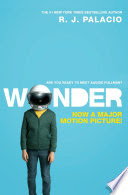In 2019, I started a new interview series on my blog called Lessons for Baby Author Me. In this series, established authors give advice to their former, naive selves. They step back in time and offer words of wisdom on topics like launch parties, book promotion, school visits, first drafts and many more. The topics vary with each interview. Basically, you hear everything that your favorite authors wish they’d known back in the day when they were first starting out.
The series was inspired by a talk I heard from the amazing Ally Carter at an SCBWI Oklahoma conference entitled, “A Letter to Baby Author Me.” At the time, I was anxiously awaiting the publication of my debut novel, Skeleton Tree, and her talk informed, inspired and spoke directly to my heart.
I’m hoping to pass on some of that love to aspiring (and established) authors everywhere with this interview series. Here are some highlights from this year's interviews:

S.A. Larsen
My biggest advice to you would be to remember that you matter, too. You began telling stories to your children when they were babies, up at all hours rocking or feeding them. And in the SUV, while driving to this youth hockey game or that one. Writing is your comfort, your inspiration, your therapy to bask in life’s joys and work through its angst. Life will happen. You will experience happiness, but also a lot of loss and pain. Don’t shut out these emotions. Embrace and use them to strengthen your stories, to take your characters to emotional depths that readers can’t resist. Be brave and trust that you are good enough to do this. You are not perfect. You never will be. But you are worth it.

Jennifer Latham
Finally, here’s the real scoop: good writing is a combination of aptitude, hard work, and craft. You think you’re pretty hot stuff right now (or you will tomorrow when you find out Scarlett sold), but you’re about to learn that every manuscript is tough. Nothing in publishing is easy. You are not as good at craft as you thought, but craft is a thing that can be learned. So dig in, babe. Grab a laptop. Start typing. Because this is the only job you’ve ever really loved, and as long as you write today, you can always quit…
tomorrow.

Tania del Rio
Here’s the truth: reviews aren’t for you. They are for the readers. Your book is out in the world, and out of your hands. It is a wild animal running amok and some people will think it is the cutest little critter they’ve ever seen, and some will think it’s a bug that needs to be squished. Chances are you’re a reader too (at least I hope so!). Think of the books you’ve loved and hated over the years. If you look at those reviews you will find plenty of people who agree with you, and just as many who don’t. The point is, don’t take it personally. Stories are subjective and will affect people in different ways depending on their own backgrounds and preferences. Focus on the things you can control, and ignore the things you can’t. Trust me, you’ll be much happier.
To read more Lessons for Baby Author Me interviews, head over to my blog at: https://kimventrella.com/category/baby-author-me/
About the Author:
Kim Ventrella is the author of the upcoming middle grade novels THE SECRET LIFE OF SAM (Fall 2020, HarperCollins) and HELLO, FUTURE ME (Aug. 2020, Scholastic). Her novels BONE HOLLOW and SKELETON TREE are out now. Her works explore difficult topics with big doses of humor, whimsy and hope. Kim has held a variety of interesting jobs, including children’s librarian, scare actor, Peace Corps volunteer, French instructor and overnight staff person at a women’s shelter, but her favorite job title is author. She lives in Oklahoma City with her dog and co-writer, Hera. Find out more at https://kimventrella.com/ or follow Kim on Twitter and Instagram.































